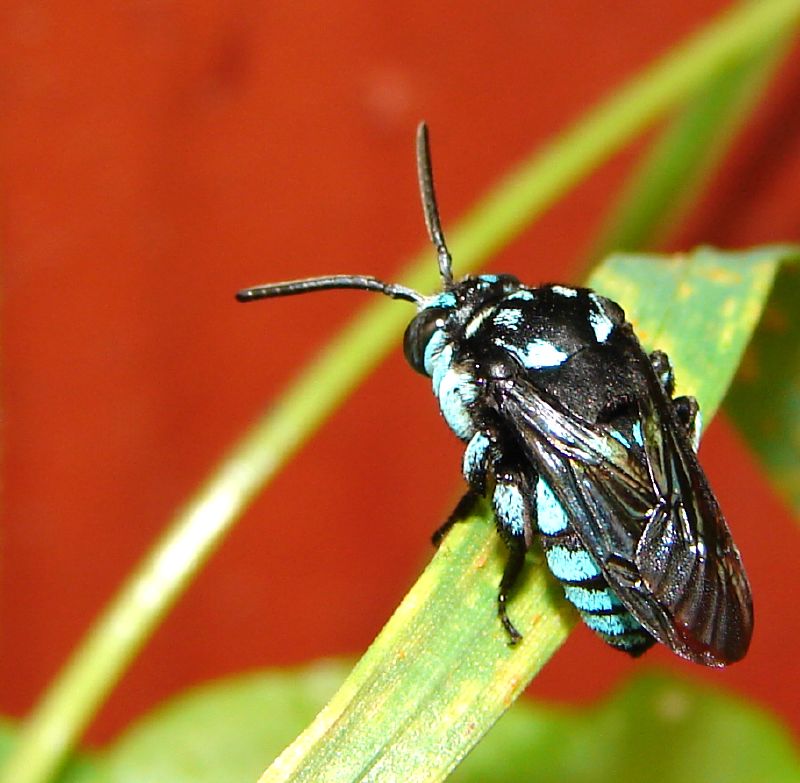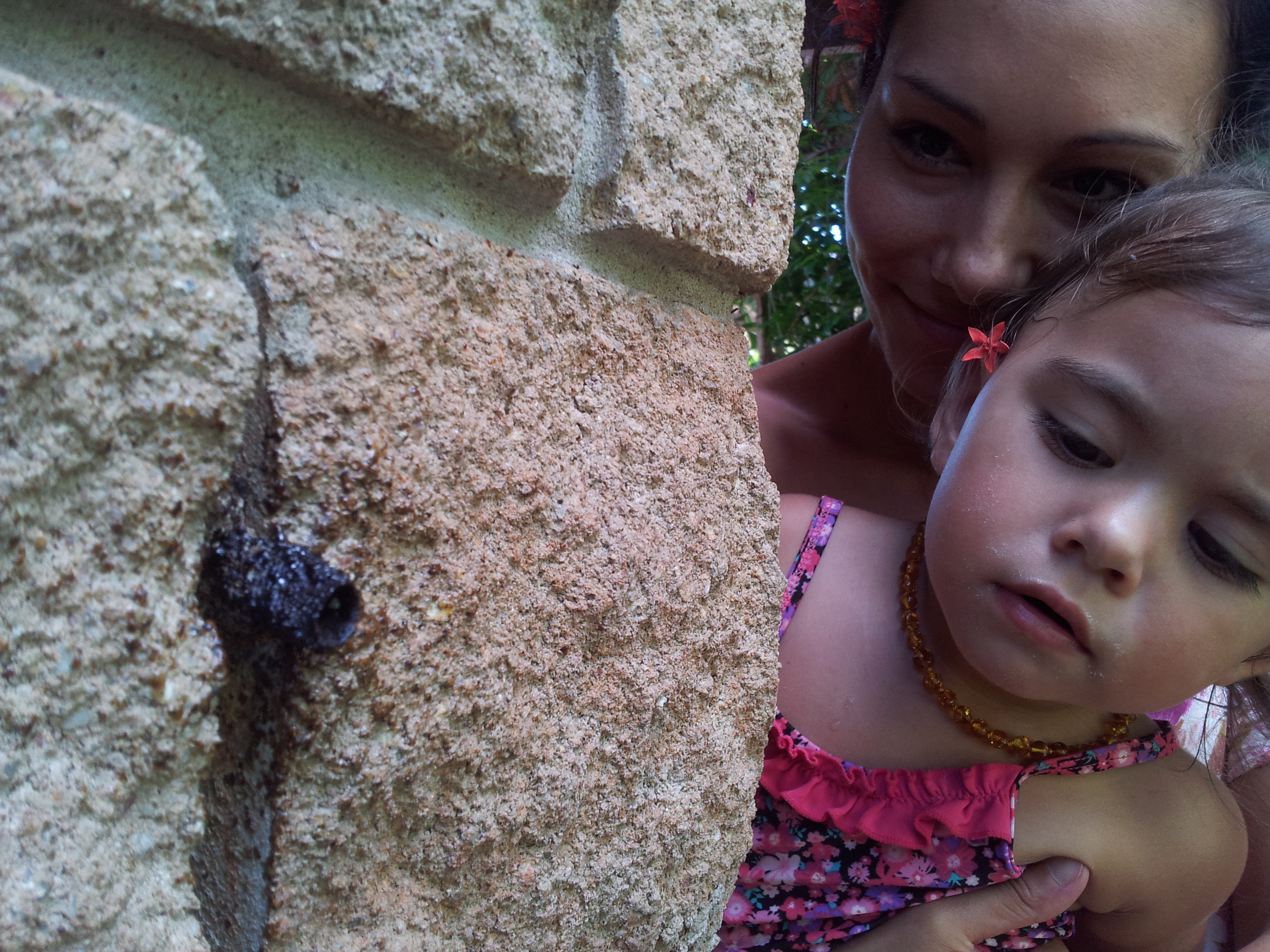Australian native bees on:
[Wikipedia]
[Google]
[Amazon]




 Australia has over 1,700 species of native
Australia has over 1,700 species of native
Australian bees list
Bees Hymenoptera of Australia




 Australia has over 1,700 species of native
Australia has over 1,700 species of native bee
Bees are winged insects closely related to wasps and ants, known for their roles in pollination and, in the case of the best-known bee species, the western honey bee, for producing honey. Bees are a monophyly, monophyletic lineage within the ...
. Bees collect pollen
Pollen is a powdery substance produced by seed plants. It consists of pollen grains (highly reduced microgametophytes), which produce male gametes (sperm cells). Pollen grains have a hard coat made of sporopollenin that protects the gametop ...
from flower
A flower, sometimes known as a bloom or blossom, is the reproductive structure found in flowering plants (plants of the division Angiospermae). The biological function of a flower is to facilitate reproduction, usually by providing a mechanism ...
s to feed their young. Flies
Flies are insects of the Order (biology), order Diptera, the name being derived from the Ancient Greek, Greek δι- ''di-'' "two", and πτερόν ''pteron'' "wing". Insects of this order use only a single pair of wings to fly, the hindwing ...
do not do this, although they may be seen ''eating'' pollen, so identification is not always easy.
Sting or no sting, solitary vs social
Eleven of the species, the social native bees, are in two genera, ''Tetragonula
''Tetragonula'' is a genus of stingless bees. In 1961, Brazilian bee expert J.S. Moure first proposed the genus name ''Tetragonula'' to improve the classification system by dividing the large genus ''Trigona'' stingless bees into 9 smaller grou ...
'' and '' Austroplebeia'', and have no sting.
Of the remainder, which live solitary lives, none are aggressive, and most cannot actually use their sting on human
Humans (''Homo sapiens'') are the most abundant and widespread species of primate, characterized by bipedalism and exceptional cognitive skills due to a large and complex brain. This has enabled the development of advanced tools, culture, ...
s because they are too small to do so. Larger examples of Australian native bee are capable of stinging if handled or squashed.
The stings of most Australian native species of bee will cause relatively minor discomfort to most people -- "not as painful as those of a bull ant or paper wasp and last only a few minutes". However, they may sting more than once, and can cause an allergic reaction
Allergies, also known as allergic diseases, refer a number of conditions caused by the hypersensitivity of the immune system to typically harmless substances in the environment. These diseases include hay fever, food allergies, atopic derm ...
—increasing effect associated with repeated exposure to the antigen
In immunology, an antigen (Ag) is a molecule or molecular structure or any foreign particulate matter or a pollen grain that can bind to a specific antibody or T-cell receptor. The presence of antigens in the body may trigger an immune response. ...
.
Honey
None of the native species of bee in Australia are truehoney bee
A honey bee (also spelled honeybee) is a eusocial flying insect within the genus ''Apis'' of the bee clade, all native to Afro-Eurasia. After bees spread naturally throughout Africa and Eurasia, humans became responsible for the current cosmop ...
s, which are native to Europe
Europe is a large peninsula conventionally considered a continent in its own right because of its great physical size and the weight of its history and traditions. Europe is also considered a subcontinent of Eurasia and it is located enti ...
, Asia
Asia (, ) is one of the world's most notable geographical regions, which is either considered a continent in its own right or a subcontinent of Eurasia, which shares the continental landmass of Afro-Eurasia with Africa. Asia covers an ...
and Africa
Africa is the world's second-largest and second-most populous continent, after Asia in both cases. At about 30.3 million km2 (11.7 million square miles) including adjacent islands, it covers 6% of Earth's total surface area ...
. Social species of native bees do produce honey, but not much, as they are relatively primitive bee species. In cool-climate areas of Australia, all the honey the bees produce is needed by the swarm to live through winter.
Collecting honey from Australian native bee nests can cause many of the bees to drown in spilt honey. The honey is tangy in comparison with commercial honey taken from the European honey bee. The bees store their honey in "small resinous pots which look like bunches of grapes".
Pollination
The different species of Australian native bee have different habits and preferences in gathering pollen, so different species are better pollinators of a given plant than other species. Research is currently underway into use of ''Amegilla'' ("blue-banded bees") for use in pollinatinghydroponic
Hydroponics is a type of horticulture and a subset of hydroculture which involves growing plants, usually crops or medicinal plants, without soil, by using water-based mineral nutrient solutions in aqueous solvents. Terrestrial or aquatic plan ...
tomato
The tomato is the edible berry of the plant ''Solanum lycopersicum'', commonly known as the tomato plant. The species originated in western South America, Mexico, and Central America. The Mexican Nahuatl word gave rise to the Spanish word , ...
es, while some hydroponic growers are petition
A petition is a request to do something, most commonly addressed to a government official or public entity. Petitions to a deity are a form of prayer called supplication.
In the colloquial sense, a petition is a document addressed to some offic ...
ing for introduction to the Australian mainland of the European bumblebee, ''Bombus terrestris
''Bombus terrestris'', the buff-tailed bumblebee or large earth bumblebee, is one of the most numerous bumblebee species in Europe. It is one of the main species used in greenhouse pollination, and so can be found in many countries and areas wh ...
''—the island continent Australia has a history of sensationally poor outcomes from introduced species
An introduced species, alien species, exotic species, adventive species, immigrant species, foreign species, non-indigenous species, or non-native species is a species living outside its native distributional range, but which has arrived the ...
, the most famous example being that of the cane toad ''Bufo marinus
The cane toad (''Rhinella marina''), also known as the giant neotropical toad or marine toad, is a large, terrestrial true toad native to South and mainland Central America, but which has been introduced to various islands throughout Ocea ...
''—so the question of use of native vs introduced bees for pollination in Australia is controversial.
Western Australian native bees
Approximately 800 species of native bee occur inWestern Australia
Western Australia (commonly abbreviated as WA) is a state of Australia occupying the western percent of the land area of Australia excluding external territories. It is bounded by the Indian Ocean to the north and west, the Southern Ocean to ...
, and many of them are endemic
Endemism is the state of a species being found in a single defined geographic location, such as an island, state, nation, country or other defined zone; organisms that are indigenous to a place are not endemic to it if they are also found els ...
. Like all bees, native Australian bees are a type of specialised wasp that has evolved to vegetarianism
Vegetarianism is the practice of abstaining from the consumption of meat ( red meat, poultry, seafood, insects, and the flesh of any other animal). It may also include abstaining from eating all by-products of animal slaughter.
Vegetaria ...
. They feed on nectar, but it is the female native Australian bee that will thicken the nectar to make honey before taking it back to the nest. Australian bees are mostly solitary insects. A female bee will build a nest with the aid of "workers". Native Australian bees face many threats, particularly from parasitic insects such as some wasps, flies and beetles.
Species
* ''Amegilla asserta
''Amegilla asserta'' is a species of bee
Bees are winged insects closely related to wasps and ants, known for their roles in pollination and, in the case of the best-known bee species, the western honey bee, for producing honey. Bees are a ...
'' (Cockerell Cockerell is a surname, and may refer to:
People
*Allan Cockerell (1891–1975), New Zealand soldier and politician
* Catherine Cockerell Cobb (1903–1995), British jeweler, silversmith, daughter of Douglas
*Charles Robert Cockerell (1788–1863), ...
, 1926)
* ''Amegilla bombiformis
''Amegilla bombiformis'', commonly known as the teddy bear bee or golden haired mortar bee, is an Australian native bee in the family Apidae.
It was originally described by F. Smith in 1854 as ''Saropoda bombiformis'' from a collection near th ...
'' (Teddy bear bee, Golden haired mortar bee) ( Smith, 1854)
* ''Amegilla cingulata
''Amegilla cingulata'' is a species of blue-banded bees, bee native to Australia. Currently, several scientific organizations are conducting research on how ''A. cingulata'' benefits agriculture through its distinctive "buzz pollination".
Ta ...
'' (Blue-banded bee) (Fabricius Fabricius ( la, smith, german: Schmied, Schmidt) is a surname. Notable people with the surname include:
*people from the Ancient Roman gens Fabricia:
**Gaius Fabricius Luscinus, the first of the Fabricii to move to Rome
* Johann Goldsmid (1587� ...
, 1775)
* '' Amegilla dawsoni'' (Dawson's burrowing bee) (Rayment, 1951)
Carpenter bees
* '' Xylocopa aerata'' (Golden-green carpenter bee, Green carpenter bee) (Smith, 1851) * '' Xylocopa bombylans'' (Peacock carpenter bee) (Fabricius, 1775)Reed bees
Genus ''Exoneura
''Exoneura'' is a genus of bees belonging to the family Apidae.
The species of this genus are found in Australia.
Species
Species:
*''Exoneura abstrusa''
*''Exoneura albolineata''
*''Exoneura albopilosa''
* ''Exoneura robusta
References
:''
* ''Exoneura abstrusa
''Exoneura'' is a genus of bees belonging to the family Apidae.
The species of this genus are found in Australia.
Species
Species:
*'' Exoneura abstrusa''
*'' Exoneura albolineata''
*'' Exoneura albopilosa''
* ''Exoneura robusta
''Exon ...
'' (Cockerell, 1922)
* ''Exoneura albolineata
''Exoneura'' is a genus of bees belonging to the family Apidae.
The species of this genus are found in Australia.
Species
Species:
*''Exoneura abstrusa''
*'' Exoneura albolineata''
*'' Exoneura albopilosa''
* ''Exoneura robusta
''Exone ...
'' (Cockerell, 1929)
* ''Exoneura albopilosa
''Exoneura'' is a genus of bees belonging to the family Apidae.
The species of this genus are found in Australia.
Species
Species:
*''Exoneura abstrusa''
*''Exoneura albolineata''
*'' Exoneura albopilosa''
* ''Exoneura robusta
''Exoneu ...
'' (Rayment, 1951)
* ''Exoneura robusta
''Exoneura robusta'' is a species of the primitively eusocial Allodapini, allodapine bee, belonging to the genus commonly referred to as "reed bees". Their common name derives from their use of the soft pith of dead fern fronds as a nesting mater ...
''
Stingless bees
* '' Austroplebeia australis'' ( Friese, 1898) * '' Austroplebeia cassiae'' (Cockerell, 1910) * '' Austroplebeia cincta'' ( Mocsáry, 1898) * '' Austroplebeia essingtoni'' (Cockerell, 1905) * '' Austroplebeia magna'' (Dollin, Dollin, & Rasmussen, 2015) * ''Tetragonula carbonaria
''Tetragonula carbonaria'' (previously known as ''Trigona carbonaria'') is a stingless bee, endemic to the north-east coast of Australia. Its common name is sugarbag bee. They are also occasionally referred to as bush bees. The bee is known to po ...
'' (Sugarbag bee) (Smith, 1854)
* ''Tetragonula hockingsi
''Tetragonula hockingsi'' (Cockerell, 1929) is a small stingless bee native to Australia. It is found primarily in Queensland. The colonies can get quite large, with up to 10,000 workers and a single queen. Workers of ''Tetragonula hockingsi'' h ...
'' (Cockerell, 1929)
* '' Tetragonula mellipes'' (Friese, 1898)
See also
* Elizabeth Exley, an Australian native bee entomologistReferences
{{ReflistExternal links
Australian bees list
Bees Hymenoptera of Australia